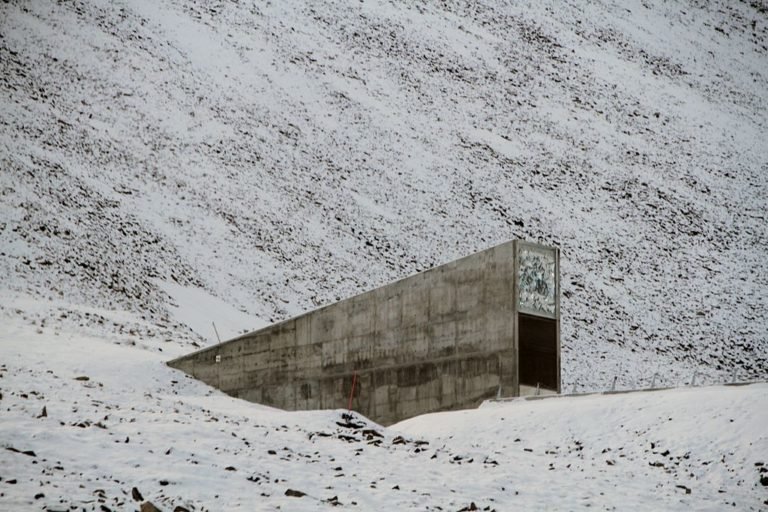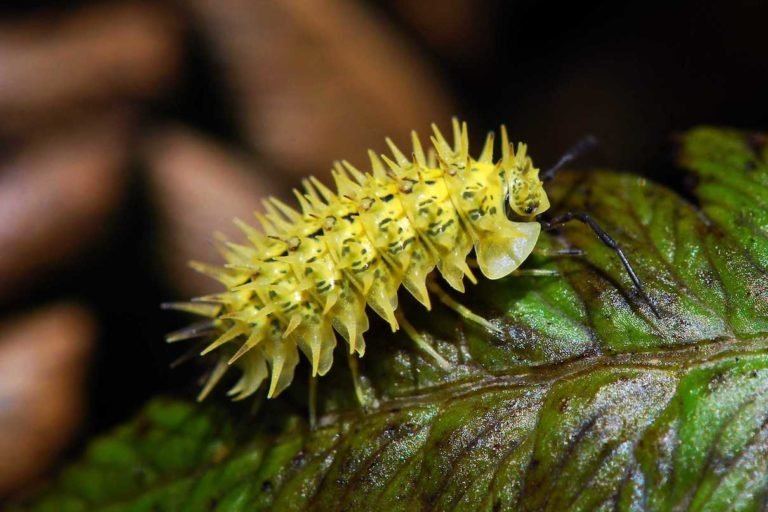- Brazilian agricultural research agency Embrapa has collected some 120,000 seeds from nearly 700 crop species over the course of 49 years, part of an effort to safeguard the country’s rich food diversity.
- While many of the samples are stored in the network of 164 seed banks throughout Brazil, some have been sent to the Svalbard Global Seed Vault in the Norwegian Arctic, including rice, beans, peppers and pumpkins, with native varieties of corn, passion fruit and cashew to follow.
- A movement to recover traditional seeds, started by the Krahô Indigenous people together with Embrapa in the 1990s, has helped initiate exchanges of both seeds and knowledge all over the country.
- Embrapa researchers say their partnership with Indigenous and traditional communities is essential to their efforts, since many seeds can’t be stored in vaults, and must be continuously cultivated in the fields.
On an island in the estuary known as Lagoa dos Patos, in Brazil’s Rio Grande do Sul state, an old lady kept a treasure in her fridge. For years, it held a gift she had received at her wedding decades earlier: beans and pumpkin seeds.
“She said she was going to give me the seeds she got from her mother-in-law,” says Rosa Lia Barbieri, a researcher with the Brazilian Agricultural Research Corporation (Embrapa). “They were seeds from a pumpkin they call gila, which is often used to make sweets,” she adds. At the time, Barbieri was in charge of the national seed bank for gila (Cucurbita ficifolia), also known as the fig-leaf or Malabar gourd.
Today, the seeds donated by the old lady and many other farmers throughout Brazil are preserved in even more specialized refrigerators: Embrapa’s germplasm banks. The partnership, involving researchers and farmers, is essential to stocking the 164 seed banks in Brazil, storing genetic resources and reproductive material from plants that are key to the country’s food and agricultural needs.
Embrapa, the research unit of Brazil’s agriculture ministry, has to date collected about 120,000 seeds from nearly 700 agricultural species over the course of 49 years. All the samples are kept at a chilly minus 20° Celsius (minus 4° Fahrenheit).
“We have three ways to preserve that material,” Barbieri says. “We keep the seeds at low temperatures, in tissue cultures [slow-growth test tubes], or [grow them] as plants in the field.”
Beans, rice, corn and pumpkins produce seeds known as orthodox, which can be stored in dry and cold conditions, sometimes even for centuries, and still be able to germinate afterward. Mango, peach and avocado, in turn, produce recalcitrant seeds, which don’t have this ability, and hence must be cultivated immediately after harvesting in order to germinate. The storage method for these species, then, is a field plantation: There are banks of native fruit trees in several sites across Brazil, affectionately called the Noah’s Ark of native Brazilian fruits.
“The Brazil nut bank, for example, is located in Pará state, at Embrapa’s Eastern Amazon [office], and the plants are grown in the field. We can’t keep Brazil nut seeds for long; they lose viability,” Barbieri says. “We have several germplasm banks for Amazon fruits, such as cupuaçu and camu-camu, kept in the field.”
Over the past 50 years, agricultural productivity has been affected by climate change all over the world. The latest report released by the Intergovernmental Panel on Climate Change (IPCC) suggests that extreme events such as droughts, heat waves and floods will impact Brazilian agriculture. In a scenario in which greenhouse gas emissions remain high, studies show that production of rice could fall by 6%, wheat by 21%, and corn by 10%.
Cashews in the arctic
To adapt their work to a warming planet, scientists like Barbieri have had to go to extremes. To the northernmost town on Earth, in fact: Longyearbyen in the Norwegian Arctic, home to the Svalbard Global Seed Vault.
“Climate change was taken into account, including the possible melting of polar ice caps. So much so that the Svalbard Global Seed Vault was built 130 meters [430 feet] above the sea,” says Barbieri, who serves on the international advisory panel for the vault.
There aren’t any guard dogs here for security. The Norwegian archipelago of Svalbard is home to nearly a thousand polar bears — one for every three people who live here. Opened in February 2008 to conserve the biodiversity of crop species from all over the world, the seed vault was dug into solid mountain rock to resist climatic catastrophes — and even a nuclear blast. The steel door, with its several security systems, opens the way to a 125-m (410-ft) tunnel that leads to three chambers kept at a constant minus 18°C (minus 0.4°F), which can store 4.5 million seed samples.
The Svalbard seed bank, also known as the “Doomsday Seed Vault,” holds more than a million samples. Sitting on some of its shelves are boxes sealed with the Brazilian flag and filled with rice, bean, pepper, onion, pumpkin, melon, watermelon and corn seeds. Another shipment of Brazilian seeds is on its way, Barbieri says.
“The seeds are already in the boxes, packed, and we now are at the documenting stage. They will be sent by post soon,” she says. These boxes hold forage species for feeding animals, and varieties of native corn, passion fruit and cashew. “Cashew nut behaves like an orthodox seed, so we are sending the first seeds to Svalbard; no country has sent it there yet,” Barbieri says.
The seeds stored in Svalbard are owned by the governments and entities that deposit them there, and can only be removed or repatriated in the event of a catastrophe. The first withdrawal of seeds from the vault came in 2016, by Syria, which had seen its own domestic seed banks destroyed in the civil war.

Genetic erosion
In the 1990s, members of the Krahô Indigenous tribe arrived at Embrapa’s headquarters in Brasília, accompanied by a representative from Funai, the federal agency for Indigenous affairs. They were there to recover old varieties of corn seeds that had disappeared from their villages.
In the 1950s, a messianic missionary group had encouraged the Krahô to abandon their traditional practices, including giving up their diverse range of crops for rice monoculture. With the loss of a large part of their agricultural variety, including traditional corn seeds, they eventually fell into a state of poverty and hunger.
The Krahô asked Embrapa’s managers and researchers to open the cold chambers for them to search for their seeds. It was the first time this had happened at the request of a community. At the time, the seed bank held four varieties of corn that had been collected in previous decades from the Xavante Indigenous people, a distantly related tribe. The Krahô recognized these seeds as examples of corn from their own culture.
“We like to joke that the Krahô shot an arrow at Embrapa’s seed bank because they raised our awareness in the process,” says Embrapa researcher Terezinha Dias, who has coordinated actions on ethnoscience, conservation of genetic resources and promotion of food security with the Krahô people for 20 years.
On that occasion, each Krahô chief was allowed to take six to eight seeds back to his village. After a year, they returned to Brasília bringing bags of seeds that they had multiplied on their own land. The Krahô’s mission to reclaim their crop heritage resulted in Embrapa partnering with Kapéy, the Union of Krahô Villages, and Funai, working to strengthen the links between traditional wisdom and scientific knowledge.
One of the outcomes from the partnership was the interaction between two seed conservation strategies: ex-situ, or conservation outside the native environment, as in the case of Embrapa’s seed banks; and on-farm, or conservation in the field, through constant planting, as in the Krahô gardens.

The devaluation of traditional and native seeds is a legacy of the Green Revolution, the global movement that began in the mid-20th century to encourage increased agricultural production. The movement bet on mechanization, agrochemicals, and seeds genetically improved for certain traits at research centers — yet often vulnerable and poorly adapted to climatic variations and to each region’s soil. Another consequence was the contamination of traditional crops by pollen as a result of the increasingly common modified crops.
“The Green Revolution monoculture model was expanded worldwide, and companies started working with agrochemicals in the plant improvement process,” Dias says. “Companies would come already lobbying governments in each country so that local seed laws would ban the use of traditional seeds.”
The result was the impoverishment of agrobiodiversity, with the extinction of many plant varieties and loss of cultural knowledge about species management, a process known as genetic erosion.
Among the efforts being made to push back against this trend are seed fairs, started in 1997 by the Krahô after the reclamation of their traditional corn species. Since then, several fairs have been held to exchange seeds and knowledge, with other Indigenous peoples also participating. In 2020, the Krahô Traditional Seed Fair was one of 10 initiatives awarded a 50,000 reais ($10,200) prize by BNDES, the Brazilian Development Bank, for good practices in traditional agricultural systems.
“Can we preserve everything here, in our ex-situ seed bank? Of course not,” Dias says. “We have to establish partnerships with Indigenous peoples, with Quilombolas,” communities of Afro-Brazilian heritage descended from self-liberated slaves, who also maintain traditional agricultural practices.
“Indigenous territories are conservation arks,” Dias adds. “If we have a seed bank, can you imagine what’s inside those communities? It’s one thing to have the seed that you collect and that sits here, frozen. Another thing is to have that seed in the farmer’s hand, which he gradually adapts.”
Banner image of corn varieties by ulleo via Pixabay.
This story was reported by Mongabay’s Brazil team and first published here on our Brazil site on May 10, 2022.
On agrobiodiversity, the Andes can teach the world much about crop conservation (commentary)















